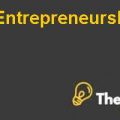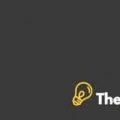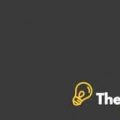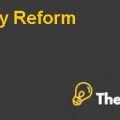
Introduction:
The report is about RightNow Technologies that was founded by Grey Gianforte, who is also the CEO of the company. In 1997, Gianforte came up with an idea for the software product that would help companies’ response to customer emails. During its operations from 1997 to 2003 it has faced many of the favorable and unfavorable situations to go through its business.
The CEO is under consideration to exit from the industry; therefore he is under consideration to accepting an acquisition offer or IPO plan in 2004 or continues in the industry. The debate is made between the board of directors to choose any of the options. There are mixed opinions about the best way to grow but it has an acquisition from a big software company, and it looks attractive to the CEO of the company.
Gianforte currently holds 60% equity in RightNow, therefore it has the most of authorities with it and as a result he gives his opinion most importance. Thus, he has chosen to exit from the industry. In his first years of operation, Gianforte successfully raised the funds from venture capital from Knee-jerk to complete the research on the software that is under consideration of Gianforte.
Evaluate the progress of the company and its situation at year end, 2003.
There are four phases in which the performance and the progress of the company can be evaluated, and those four phases are given below.
Foundation:
In the foundation phase from 1997 to 1998, there was no cash inflow or revenue but some of the important actions were made CEO to generate the revenues from 1999. He had agreed to a capital venture named Knee-jerk to complete its research and development of the software. In this phase, Gianforte closed the deal with 40 customers and he had believed that he should hire sales personnel who perform sales duties for his company. He then hired sales personnel to have higher sales for the future years, and he believed that skilled salespersons can perform better for the organization.
Early stage:
The early stage of the phase started from the last quarter of 1998. The company hired Mike Myer, who had become a Vice-President of Development at RightNow Technologies. Myer was the person who built the product that the sales team was selling in those periods.
In its early stage, it faced a challenge to build wanted product and the features were according to the specification given by the customers. The application service was provided to the customers in early stage, and it was said that the product is about the self-service. It did not hold any of the customer service interactions, but it provided an application service provider on its website regarding managing the software.
The ASP model seemed to be technologically impossible for the customers; however, it had given a huge startup advantage to the company. The product allowed it to show rather than tell to the customers. Gianforte paid to Montana State University students $8 to customize the demo as it feels its website. They became its employees who were only paid for the development of the website. ASP model enabled RightNow’s development team to iterate the software design much faster than it is possible in the shrink-wrap model. It gave an opportunity to do the incredible amount of the quality assurance testing.
Rapid growth:
From fall 1998 to fall 1999, it experienced enormous internal growth that increased the size of the company from 8 to 80 employees. The sales were doubling in every quarter, and it required a management team for the finance. Gianforte found a person named Susan Carstensen, who had been a CFO of the publically traded gaming technology powerhouse.
Finance was needed to expand in the industry, therefore the IPO’s consideration was given by the CEO and CFO arranged to hire some accountants, lawyers, and auditors to audit the accounts that are required if the company go through the IPO process. The CEO required an amount of at least $5 million before the IPO take place. In December 1999, the deal was closed with Greylock by raising an amount of $16.4 million in which Summit Partners also participated.
After rapid growth (IPO attempting):
In 2000, the investment banks failed to Bozeman to offer their service for the IPO process. In April 2000, the company filed its S-1, then the NASDAQ index fall have the company an option to delay the IPO as it was not so attractive in these days.....................
This is just a sample partial case solution. Please place the order on the website to order your own originally done case solution.











